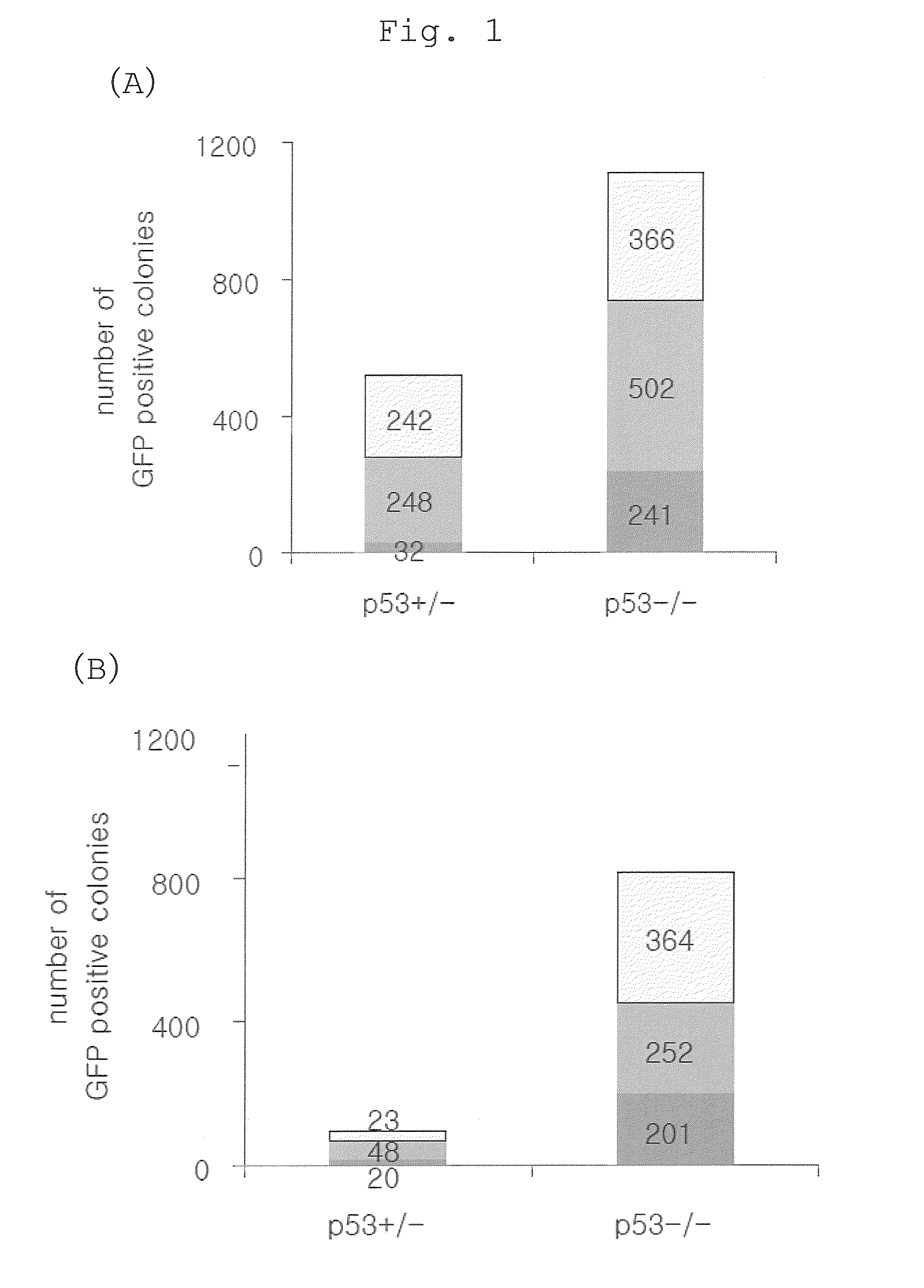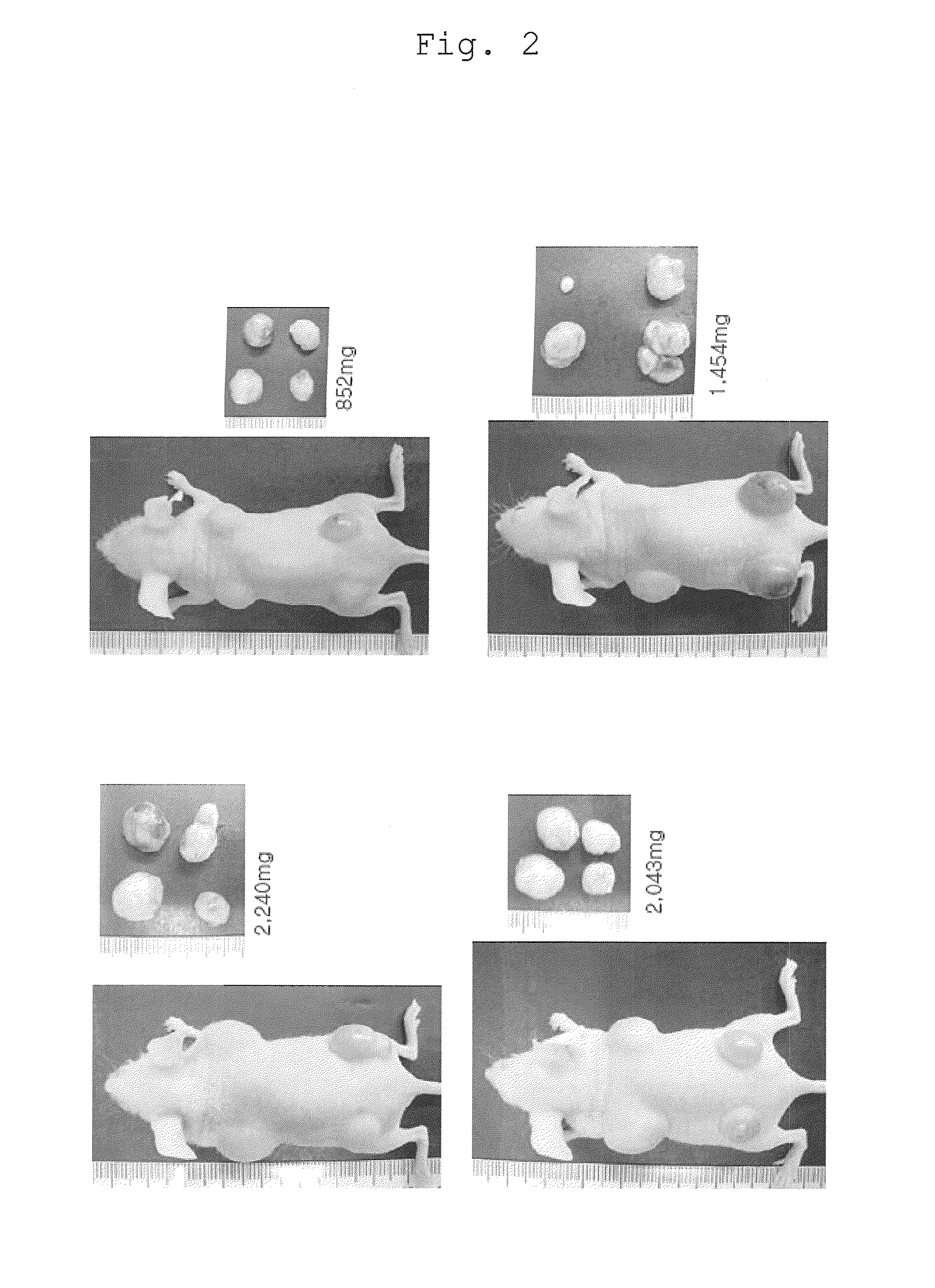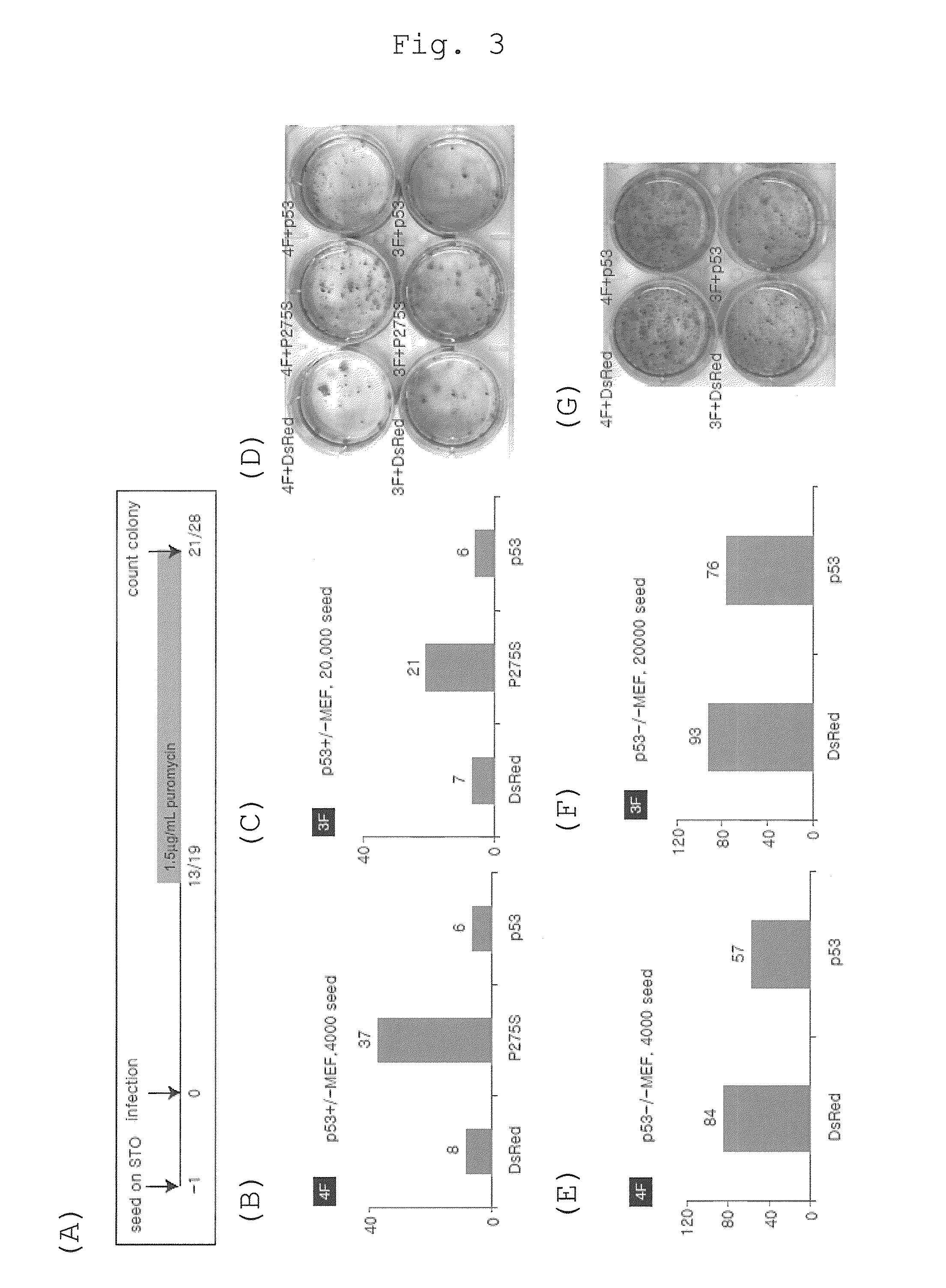Method of efficiently establishing induced pluripotent stem cells
a technology efficient establishment, which is applied in the field of improving the efficiency of establishment of induced pluripotent stem cells, can solve the problems of low efficiency of ips cell establishment at less than 1%, low efficiency of ips cell establishment, tumorigenesis in tissues or individuals, etc., and achieves the effect of improving the efficiency of establishment of ips cells and efficiently producing ips cells
- Summary
- Abstract
- Description
- Claims
- Application Information
AI Technical Summary
Benefits of technology
Problems solved by technology
Method used
Image
Examples
example 1
Effects of p53 Deficiency
[0144]A p53 homo-deficient mouse or hetero-deficient mouse having a Nanog reporter was used as an experimental system. p53 is a gene that is expressed in almost all cells and controls cell cycle termination or apoptosis induction during repair of damaged cells. These mice have been deprived of the function of the p53 gene by replacing the exon 5 with the neomycin resistance gene (Lawrence A. Donehower (1992). Nature 356, 215-221). It has been reported that p53 homo-deficient mice are born normally but frequently suffer from tumorigenesis. The Nanog reporter was prepared by inserting green fluorescent protein (EGFP) and the puromycin resistance gene into the Nanog locus of a BAC (bacterial artificial chromosome) purchased from BACPAC Resources (Okita K. et al., Nature 448, 313-317 (2007)). The mouse Nanog gene is a gene expressed specifically in pluripotent cells such as ES cells and early embryos. The mouse iPS cells that have become positive for this report...
example 2
Investigation with a Dominant Negative Mutant
[0151]The function of endogenous p53 was inhibited using a dominant negative mutant of p53, and its influence on the efficiency of establishment of iPS cells was investigated. The dominant negative mutant used was p53P275S, prepared by causing a point mutation of the proline at the position 275 located in the genome-binding region of p53 to serine (Annemieke de Vries (2002). PNAS 99, 2948-2953).
[0152]The retrovirus used for reprogramming was prepared by introducing retrovirus expression vector (pMXs-Oct3 / 4, pMXs-Sox2, pMXs-Klf4, pMXs-cMyc, pMXs-p53P275S) into Plat-E cells that had been sown to a 6-well culture plate (Falcon) at 0.6×106 cells per well on the previous day (for how to prepare pMXs-p53P275S, see Example 6 below). The culture broth used was DMEM / 10% FCS (DMEM (Nacalai tesque) supplemented with 10% fetal bovine serum), and cultured at 37° C. and 5% CO2. For vector transfer, 4.5 μL of the FuGene6 transfection reagent (Roche) was...
example 3
Investigation Using p53 Inhibitory Agent
[0157]The effects of a p53 inhibitor on the efficiency of establishment of iPS cells were examined. The retrovirus used for reprogramming was prepared by introducing a retrovirus expression vector (pMXs-Oct3 / 4, pMXs-Sox2, pMXs-Klf4, pMXs-cMyc) into Plat-E cells that had been sown to a 6-well culture plate (Falcon) at 0.6×106 cells per well on the previous day. The culture broth used was DMEM / 10% FCS (DMEM (Nacalai tesque) supplemented with 10% fetal bovine serum), and cultured at 37° C. and 5% CO2. For vector transfer, 4.5 μL of the FuGene6 transfection reagent (Roche) was placed in 100 μL of Opti-MEM I Reduced-Serum Medium (Invitrogen), and this mixture was allowed to stand at room temperature for 5 minutes. Thereafter, 1.5 μg of each expression vector was added, and the mixture was further allowed to stand at room temperature for 15 minutes, and then added to Plat-E culture broth. On day 2, the Plat-E supernatant was exchanged with a fresh s...
PUM
| Property | Measurement | Unit |
|---|---|---|
| temperature | aaaaa | aaaaa |
| diameter | aaaaa | aaaaa |
| time | aaaaa | aaaaa |
Abstract
Description
Claims
Application Information
 Login to View More
Login to View More - R&D
- Intellectual Property
- Life Sciences
- Materials
- Tech Scout
- Unparalleled Data Quality
- Higher Quality Content
- 60% Fewer Hallucinations
Browse by: Latest US Patents, China's latest patents, Technical Efficacy Thesaurus, Application Domain, Technology Topic, Popular Technical Reports.
© 2025 PatSnap. All rights reserved.Legal|Privacy policy|Modern Slavery Act Transparency Statement|Sitemap|About US| Contact US: help@patsnap.com



